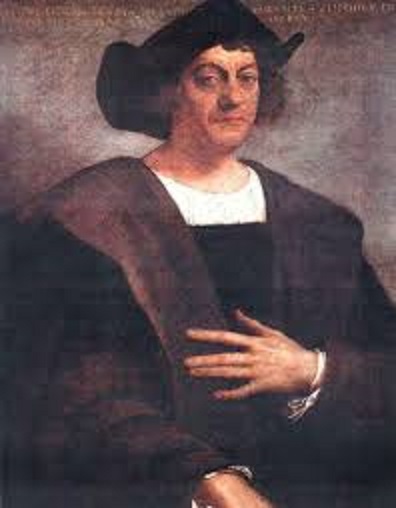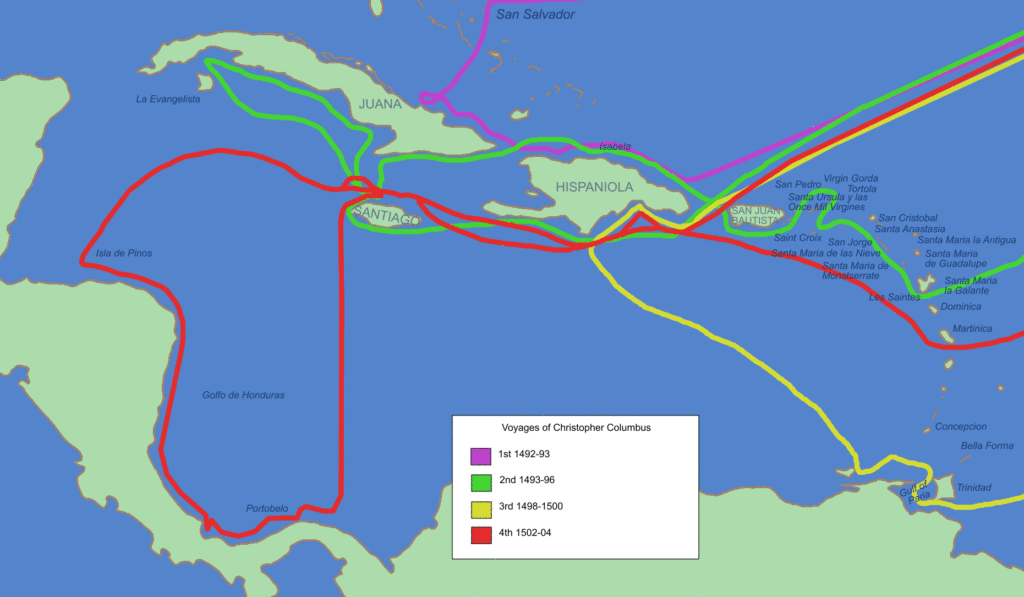Christopher Columbus Biography
Contents
Although there are many explorers who are famous for redefining history while there are very few of them who have influenced certain countries establishments. One of such historical explorer is Christopher Columbus who changed the European countries perception of the American continents.
Throughout his journey, he explored many lands, established several societies and developed Spanish colonies. But his most significant discovery was his voyage to discover Asia for its condiments and spices.

Christopher Columbus Early Life
It is believed that Christopher Columbus was born in 1451 in Genoa, Italy. Coming from a middle-class family, he worked with his father Domenico Colombo who was a wool weaver by profession. His mother was Susanna Fontanarossa. Christopher had three siblings that consisted of three brothers and a sister.
Columbus was a student of the Prince Henry’s School of Navigation, located in Portugal. He knew many languages and was well educated. He even had great knowledge of classical literature. Christopher took a deep interest in the study of the works of Marinus, Ptolemy, and many others.
Christopher Columbus began a career as a seafarer at the age of fourteen and later supported himself by selling maps and charts. He also went to many trading trips in the 1470s that took him to the Aegean Sea in Northern Europe. Columbus took a job as a novice in 1473 and later was an agent in business for some Genoa families. He also went to many Genoese colonies.
Wife and Children of Christopher Columbus
Columbus married Dona Felipa Perestrello in 1479 and they had a son, Diego, born in 1480. Columbus fathered another son, Fernando outside his marriage. His wife Dona Perestrello died in 1485.
Christopher Columbus Sailor
From a young age, Columbus worked as a sailor on the merchant and war ships in the Mediterranean Sea. In 1476 he went to Lisbon, Portugal, where he learned mathematics and astronomy (the study of the stars), subjects that are vital for navigation.
In 1480, Columbus, with the help of his brothers, came up with a plan to travel to the Indies, which covered the south and east Asia, by crossing the Atlantic Ocean that was then known as the Ocean Sea.
Columbus probably underestimated the Earth’s diameter and thought he would easily reach Asia by sailing across the Atlantic. Interestingly, Columbus had calculated the Earth’s circumference to be only 25,255 km.
He made a total of four trips to the Caribbean and South America during the years 1492-1504.
Christopher Columbus Voyages
Columbus was very sure about the possibility of reaching Asia by Sailing West, but it was hard for him to arrange funds from Europe. He tried to get support from many sources but failed many times. For several years Columbus proposed his idea to the king of Portugal, but he was turned down.
Not to be discouraged, Columbus went to try his luck in Spain. He first met with Queen Isabella I in 1486. Finally, in April 1492, Isabella and her husband, King Ferdinand V, signed an agreement with Columbus in which they agreed to pay for his voyage. He promised to bring with him spices, gold, and silk in return to be made as an admiral of seas as well as the governor of the land he discovered
Christopher Columbus Discoveries of 1492
According to this deal, Columbus would be named Admiral, become the governor of any lands he discovered, and receive a tax-free ten percent share of any riches found in the new lands.
Before Columbus was to take up a voyage to the Indies, the Europeans believed that a westward voyage was very risky and would surely prove fatal for the voyager. Spain wanted to gain supremacy over the European countries in some way and hence the Spanish king was ready to accept Columbus’ plans. He funded Columbus’ voyage that was aimed at finding a route to Asia.
Columbus began his first voyage on August 3, 1492. Christopher Columbus departed mainland Spain on August 3, 1492, with his three ships: the Nina, the Pinta, and the Santa María along with 104 men.
He set sail from the Palos de la Frontera with a ship and two caravels. He sailed to the Canary Islands from where he left for a five-day tour across the waters during which many of his men died due to illness, hunger, thirst, and disease.
On October 12, 1492, Columbus and his crew, especially one of the sailors accompanying him noticed a patch of land, which is today a part of the Bahamas. Columbus ventured to parts of Cuba and Hispaniola. On March 15, 1493, he returned to Spain after completion of his first successful journey.
Christopher Columbus Route
Convincing King Ferdinand that one more voyage would bring the abundant riches promised, Columbus went on what would be his last voyage in 1502, traveling along the eastern coast of Central America in an unsuccessful search for a route to the Indian Ocean. A storm wrecked one of his ships stranding the captain and his sailors on the island of Cuba. During this time, local islanders, tired of the Spaniard’s poor treatment and obsession with gold, refused to give them food.

In a spark of inspiration, Columbus consulted an almanac and devised a plan “punish” the Islanders by taking away the moon. On February 29, 1504, a lunar eclipse alarmed the native people enough to re-established trade with the Spaniards. A rescue party finally arrived, sent by the royal governor. Even though he made three return trips west, Christopher Columbus never actually stepped foot on the mainland of North America.
Christopher Columbus Death and His Remains
With the passing years, Columbus grew religious. He claimed to be hearing divine voices. Till death, he believed that he had toured to Asia during his voyages. He died of Reiter’s syndrome on May 20, 1506.
The place of his remains is unknown. First, his remains were kept in Spain for a long time and then sent to Santo Domingo in 1537. They were kept there until 1795 and later sent to Havana. His remains were supposed to be sent back to Spain by 1898.
However, in 1877, a box full of bones that had his name was found in Santo Domingo. Since that time, three cities Seville, Santo Domingo and Spain claim to bear his remains. In all of these three cities, the bones that were discovered are placed in elaborated museums.
He remains to be one of the iconic figures of the world, especially in the United States, for it was him, who brought the existence of the United States to the world’s notice.
More Info on- Christopher Columbus Articles, Achievements of Christopher Columbus